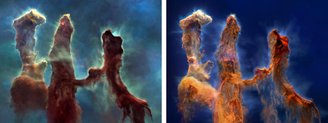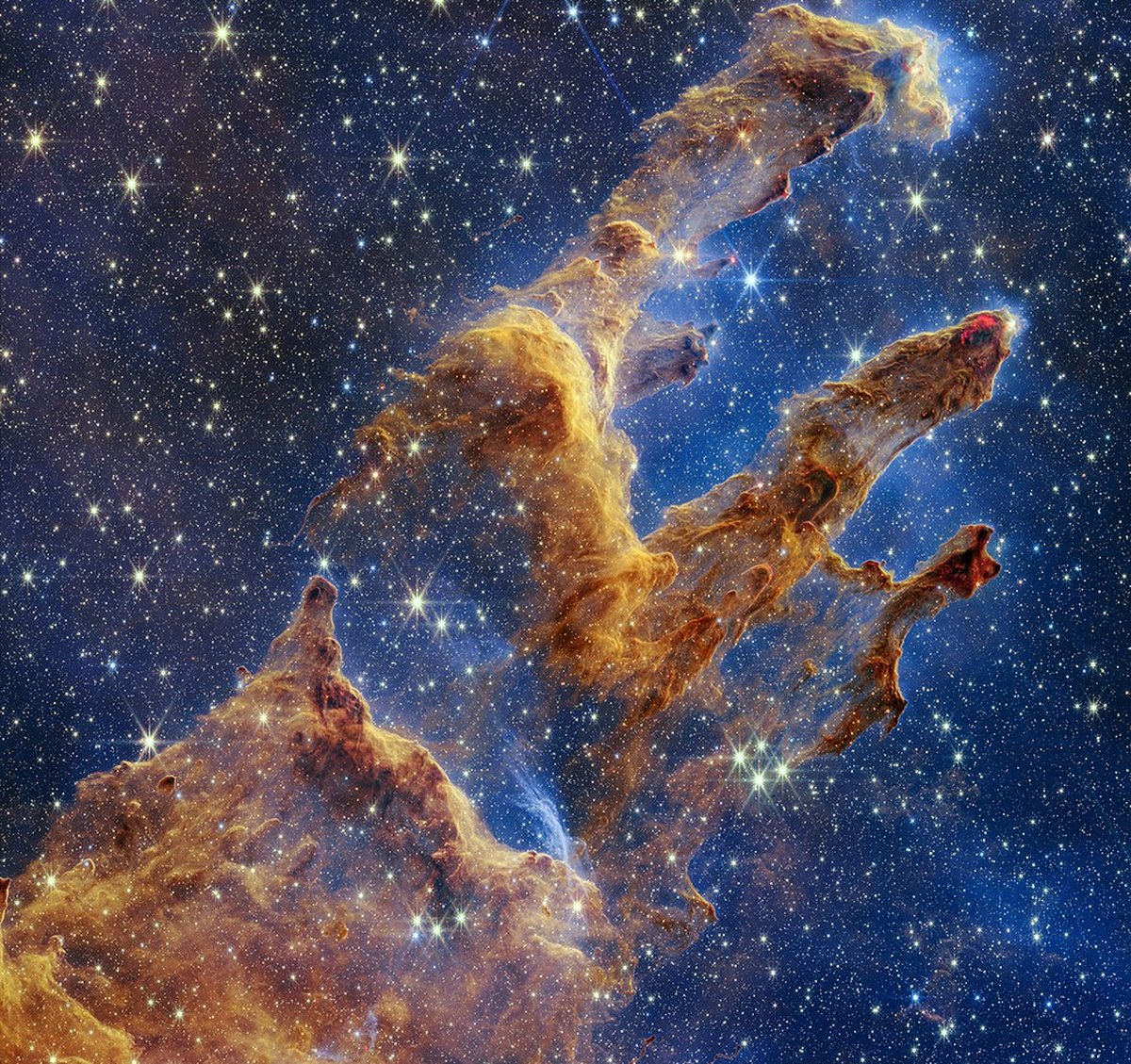In 1995, NASA’s Hubble Space Telescope captured a clear image of a massive formation of gas and dust 7,000 light-years from Earth, revealing its center, aptly named the Eagle Nebula, which until then had been fuzzy to optical telescopes. A stellar nursery that the Hubble team called the Pillars of Creation.
From that moment on, the Pillars of Creation became the postcard of the space telescope and the most viewed astronomical photograph in the world.
Recently, the Hubble and James Webb Space Telescope teams, which launch in 2021, released an enhanced 3D view of the Pillars of Creation. According to the US space agency, the new image is the most comprehensive and detailed to date, capturing the birth of baby stars across a range of wavelengths.
Pillars of Creation seen by Hubble and James Webb
Three majestic columns It is composed of interstellar dust that formed the Pillars of Creation and molecular hydrogen that was formed after the Big Bang.When the universe began to cool. They are being eroded and destroyed by the scorching purple light of the young stars born there.
Each of these “fingers” is larger than our Solar System and may have multiple “generations” of stars embedded within them in an embryonic stage. According to the NASA website, the longest finger measures three light-years, equivalent to three-quarters of the distance between our Sun and its neighboring star, Proxima Centauri.
The Pillars of Creation: a beautiful mosaic Hubble x James Webb
A composite montage of Hubble and James Webb images allows viewers to take a truly immersive journey through the Pillars of Creation. The “gaps” between the images reveal unprecedented detail and a more comprehensive view of this region of space.
Objects depicted where Hubble observes visible light are literally hotter. Webb’s infrared vision is sensitive to colder objects, even hundreds of degrees. This allows the plate to pass through the dust and reveal stars hidden within the pillars..

Good news, For those who want to touch, not see, the Pillars of CreationNASA’s new 3D visualization has been adapted to the STL file format. This means that this three-dimensional model can be printed on a 3D printer.
In this way, people will be able to tactilely interact with the columns in a physical replica of the astronomical structure. The file can be downloaded directly from the Hubble website.
Did you like the content? Tell us about it on our social networks and take the opportunity to share the article with your friends who are fans of the beautiful images from NASA’s space telescopes. On to the next one!
Source: Tec Mundo
I’m Blaine Morgan, an experienced journalist and writer with over 8 years of experience in the tech industry. My expertise lies in writing about technology news and trends, covering everything from cutting-edge gadgets to emerging software developments. I’ve written for several leading publications including Gadget Onus where I am an author.












